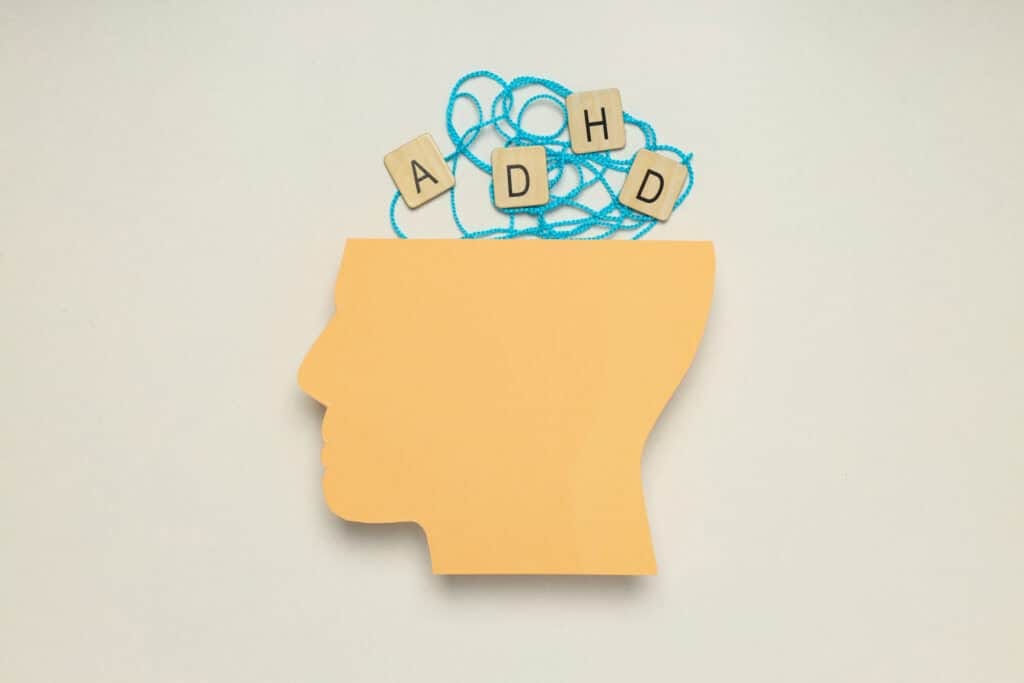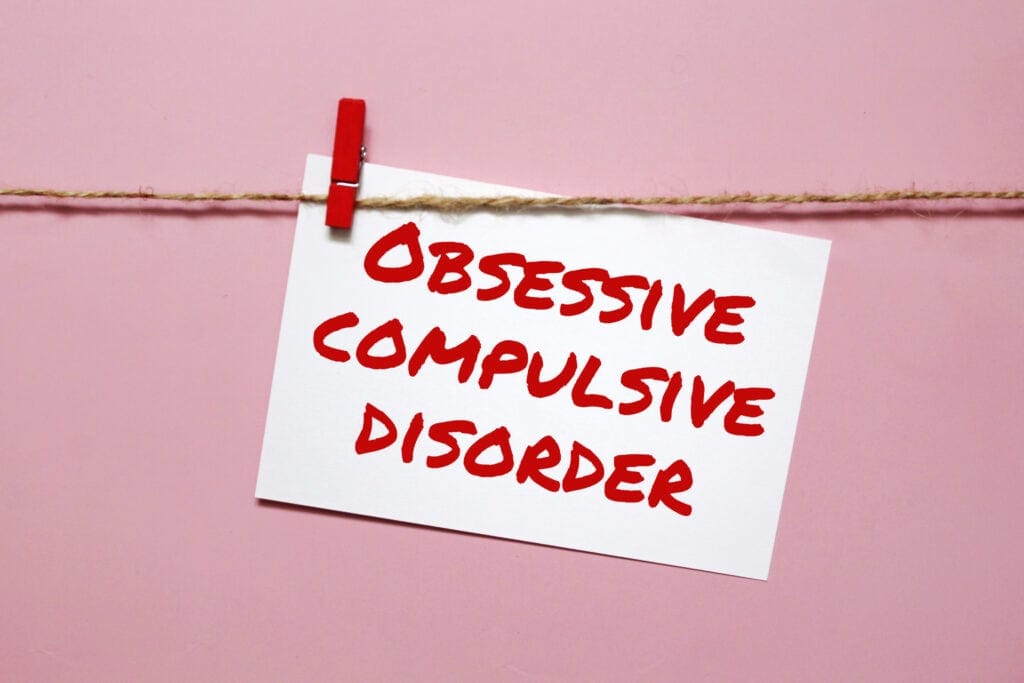If you or someone you know has trouble paying attention, controlling impulsive behaviors, or being overly active, they may have attention-deficit/hyperactivity disorder (ADHD). ADHD is a neurodevelopmental disorder that affects both children and adults. It is usually first diagnosed in childhood and often lasts into adulthood.
People with ADHD experience an ongoing pattern of inattention and/or hyperactivity-impulsivity that interferes with functioning or development. The symptoms of ADHD can vary from person to person and can be challenging to manage. However, with the right treatment, people with ADHD can lead successful and fulfilling lives. In this article, we will explore what ADHD is, its symptoms, causes, and treatments, as well as how it can affect people’s lives.
What is ADHD?
If you or someone you know has been diagnosed with ADHD, you may be wondering what it is and how it affects people. ADHD stands for Attention-Deficit/Hyperactivity Disorder, and it is a neurodevelopmental disorder that affects millions of people worldwide. It is usually first diagnosed in childhood and can persist into adulthood.
Symptoms
The symptoms of ADHD can vary from person to person, but they generally fall into two categories: inattention and hyperactivity/impulsivity. Inattention symptoms may include difficulty paying attention, forgetfulness, and being easily distracted. Hyperactivity/impulsivity symptoms may include fidgeting, restlessness, interrupting others, and difficulty waiting for one’s turn.
Types of ADHD
There are three types of ADHD: predominantly inattentive type, predominantly hyperactive-impulsive type, and combined type. Predominantly inattentive type means that a person primarily struggles with inattention symptoms, while predominantly hyperactive-impulsive type means that a person primarily struggles with hyperactivity/impulsivity symptoms. Combined type means that a person has both inattention and hyperactivity/impulsivity symptoms.
Risk Factors
There are several risk factors that may increase the likelihood of developing ADHD. These include genetics, brain injury, premature birth, exposure to environmental toxins, and certain maternal behaviors during pregnancy. However, it is important to note that having one or more risk factors does not necessarily mean that a person will develop ADHD.
In conclusion, ADHD is a neurodevelopmental disorder that affects millions of people worldwide. It is characterized by symptoms of inattention and/or hyperactivity/impulsivity. There are three types of ADHD and several risk factors that may increase the likelihood of developing the disorder. If you suspect that you or someone you know may have ADHD, it is important to seek out a professional diagnosis and treatment.
Diagnosis and Evaluation
When it comes to diagnosing ADHD, it’s important to remember that there is no single test that can identify the condition. Instead, healthcare professionals use a variety of tools and assessments to evaluate a person’s symptoms and determine whether they have ADHD.
Diagnosis
To diagnose ADHD, a healthcare professional will typically begin by conducting a comprehensive medical exam and gathering information about the person’s medical history. They may also use various rating scales and questionnaires to assess the person’s symptoms, including the DSM-5 criteria for ADHD.
According to the DSM-5 criteria, a person must exhibit a certain number of symptoms in order to be diagnosed with ADHD. These symptoms are divided into two categories: inattention and hyperactivity-impulsivity. The number of symptoms required for a diagnosis depends on the person’s age.
Evaluation
In addition to the DSM-5 criteria, healthcare professionals may also use other assessments to evaluate a person’s symptoms and determine whether they have ADHD. These assessments may include:
- Cognitive tests: These tests can help assess a person’s attention, memory, and executive function, which are often affected by ADHD.
- Behavior rating scales: These scales are completed by parents, teachers, or other caregivers and can help provide additional information about a person’s symptoms and behavior.
- Medical tests: In some cases, healthcare professionals may order medical tests to rule out other conditions that can cause symptoms similar to ADHD, such as thyroid disorders or sleep disorders.
Overall, the diagnosis and evaluation of ADHD can be a complex process that requires careful consideration of a person’s symptoms and medical history. If you suspect that you or a loved one may have ADHD, it’s important to speak with a healthcare professional who can provide a proper evaluation and diagnosis.
ADHD in Children
Children with ADHD may have difficulty paying attention, controlling impulsive behaviors, or being overly active. These symptoms can impact daily activities and relationships. ADHD is typically diagnosed in childhood and can continue into adulthood.
School
Children with ADHD may struggle in school due to their difficulty with attention and impulsivity. They may have trouble following directions, completing assignments, and staying organized. Teachers can help by providing structure, breaking down tasks into smaller steps, and allowing for movement breaks.
Home
ADHD can also impact a child’s home life. Children with ADHD may have trouble following rules, completing chores, and getting along with siblings. Parents can help by providing clear expectations, creating routines, and using positive reinforcement.
Talk
Talking to your child about their ADHD can be beneficial. It can help them understand their symptoms and develop strategies for managing them. It can also help them feel supported and understood. Encourage your child to express their feelings and ask questions.
In addition to these strategies, medication and therapy can also be helpful in managing ADHD symptoms in children. It is important to work with a healthcare professional to determine the best course of treatment for your child.
ADHD in Adults
If you are an adult with ADHD, you may find that it affects various aspects of your life, including work and relationships.
Work
ADHD can make it challenging to stay focused and organized at work. You may struggle with completing tasks on time, staying on track, and managing your time effectively. You may also find it challenging to prioritize tasks and stay motivated.
To manage your ADHD at work, you may want to consider the following strategies:
- Use a planner or calendar to keep track of your schedule and deadlines.
- Break down tasks into smaller, more manageable steps.
- Set specific goals and deadlines for yourself.
- Minimize distractions by working in a quiet environment or using noise-cancelling headphones.
- Take frequent breaks to recharge and refocus.
Relationships
ADHD can also impact your relationships with others. You may struggle with listening attentively, remembering important details, and following through on commitments. You may also find it challenging to control your emotions, leading to conflicts with others.
To manage your ADHD in your relationships, you may want to consider the following strategies:
- Practice active listening by repeating back what the other person has said.
- Use visual aids or write down important details to help you remember them.
- Be honest with others about your struggles with ADHD and how it affects your behavior.
- Work with a therapist or counselor to develop coping strategies and improve communication skills.
- Practice mindfulness techniques to help manage your emotions and reduce impulsivity.
Remember, ADHD is a manageable condition, and with the right strategies and support, you can lead a fulfilling life both at work and in your relationships.
Treatment Options
If you have been diagnosed with ADHD, there are several treatment options available to help manage your symptoms. Treatment for ADHD typically involves a combination of medication, therapies, and physical activity.
Medication
Medication can be an effective way to manage the symptoms of ADHD. Stimulant medications are the most commonly prescribed medications for ADHD and work by increasing the levels of certain chemicals in the brain that help with focus and attention. Non-stimulant medications are also available and work by increasing the levels of different chemicals in the brain.
It is important to work with your healthcare provider to find the right medication and dosage for you. They will monitor your symptoms and adjust your medication as needed.
Therapies
Therapies can also be an important part of ADHD treatment. Behavioral therapy can help you develop strategies to manage your symptoms and improve your daily functioning. Cognitive-behavioral therapy can help you identify negative thought patterns and develop more positive ways of thinking.
Family therapy can also be helpful for children with ADHD and their families. It can help improve communication and reduce conflict within the family.
Physical Activity
Physical activity can be an effective way to manage the symptoms of ADHD. Exercise can help improve focus, reduce impulsivity, and improve mood. Activities such as yoga and martial arts can also be helpful for improving focus and reducing stress.
It is important to find an activity that you enjoy and can stick with. Aim for at least 30 minutes of physical activity most days of the week.
In conclusion, there are several treatment options available to help manage the symptoms of ADHD. Medication, therapies, and physical activity can all be effective ways to manage symptoms and improve daily functioning. Work with your healthcare provider to find the right treatment plan for you.
Managing ADHD
Managing ADHD can be challenging, but with the right strategies, it can be done successfully. Here are some tips to help you manage your ADHD symptoms.
Organization
One of the keys to managing ADHD is to stay organized. This can help you stay on top of your tasks and responsibilities and reduce stress. Here are some tips for staying organized:
- Use a planner or calendar to keep track of appointments, deadlines, and other important dates.
- Create a to-do list each day and prioritize your tasks.
- Keep your workspace tidy and clutter-free.
- Use color-coded folders or labels to keep track of paperwork and documents.
Paying Attention
Another important aspect of managing ADHD is learning how to pay attention. This can be challenging, but there are strategies that can help. Here are some tips for improving your ability to pay attention:
- Minimize distractions by working in a quiet environment or wearing noise-cancelling headphones.
- Break tasks into smaller, more manageable chunks.
- Use a timer to help you stay focused on a task for a set amount of time.
- Take breaks when you need them to avoid burnout.
Focusing
Focusing can be difficult for people with ADHD, but there are techniques that can help. Here are some tips for improving your ability to focus:
- Practice mindfulness meditation to help calm your mind and improve focus.
- Use positive self-talk to stay motivated and focused.
- Take frequent breaks to avoid mental fatigue.
- Use visualization techniques to help you stay focused on your goals.
By using these strategies, you can effectively manage your ADHD symptoms and improve your quality of life. Remember that managing ADHD is an ongoing process, and it may take some trial and error to find the strategies that work best for you.
ADHD and Mental Health
Living with ADHD can be difficult, and it can also have an impact on your mental health. In this section, we will explore some of the mental health issues that are commonly associated with ADHD.
Anxiety
Anxiety is a common issue for people with ADHD. The constant worries and stress that come with ADHD can easily lead to anxiety. You may feel anxious about the future, your performance at work or school, or your relationships with others. Anxiety can cause physical symptoms such as sweating, shaking, and rapid heartbeat.
Depression
Depression is another common mental health issue for people with ADHD. The constant struggles and difficulties that come with ADHD can be overwhelming and lead to feelings of sadness and hopelessness. Depression can cause physical symptoms such as fatigue, changes in appetite, and difficulty sleeping.
Mood Disorder
People with ADHD are more likely to experience mood disorders such as bipolar disorder. Mood disorders can cause extreme mood swings, from high energy and euphoria to deep sadness and hopelessness.
Low Self-Esteem
Living with ADHD can take a toll on your self-esteem. You may feel like you are constantly failing or not living up to expectations. This can lead to a negative self-image and low self-esteem. It’s important to remember that ADHD is a disorder, and it’s not your fault.
Overall, it’s important to recognize the impact that ADHD can have on your mental health. If you are struggling with anxiety, depression, or other mental health issues, it’s important to seek help from a mental health professional. With the right treatment and support, it’s possible to manage your ADHD and improve your mental health.
ADHD and Impulsive Behavior
If you have ADHD, you may experience impulsive behavior. This can lead to difficulties in social, academic, and work environments. Understanding how impulsive behavior affects you can help you manage your symptoms.
Impulsive Behaviors
Impulsive behaviors are actions that are taken without thinking about the consequences. This can include actions that are risky, dangerous, or inappropriate. For example, you may make impulsive purchases, engage in risky behaviors, or say things that are hurtful to others.
Careless Mistakes
People with ADHD may also make careless mistakes. This can happen when you rush through tasks without taking the time to double-check your work. Careless mistakes can lead to problems in school or at work, and can damage your relationships with others.
Interrupting
Interrupting is another common symptom of ADHD. This can happen when you interrupt others while they are speaking or when you blurt out comments without thinking. Interrupting can be frustrating for others and can lead to misunderstandings.
To manage impulsive behavior, it’s important to develop strategies that work for you. This may include taking a moment to pause before acting, practicing mindfulness, or seeking support from a therapist. Additionally, medication and therapy can help manage symptoms of ADHD.
Remember that managing impulsive behavior is a process, and it may take time to find the strategies that work best for you. With patience and persistence, you can learn to manage your symptoms and lead a fulfilling life.
ADHD and Inattention
If you have ADHD, you may experience difficulty focusing on tasks or activities that require sustained mental effort. This is known as inattention. Inattention can manifest in several ways, including forgetfulness, being easily distracted, and daydreaming.
Forgetfulness
Forgetfulness is a common symptom of ADHD. You may forget important details, such as appointments or deadlines, or misplace items like keys or wallets. To help combat forgetfulness, try using a planner or setting reminders on your phone. You may also find it helpful to keep a designated spot for frequently misplaced items, like a key hook or a tray for your wallet.
Easily Distracted
People with ADHD often find themselves easily distracted, especially when performing tasks that are not stimulating or interesting. You may find yourself getting sidetracked by external stimuli, such as noises or movements, or internal distractions, like daydreams or worries. To minimize distractions, try working in a quiet, distraction-free environment. You may also find it helpful to break tasks into smaller, more manageable chunks.
Daydreaming
Daydreaming is another common symptom of ADHD. You may find your mind wandering during conversations or while performing tasks. While daydreaming can be a pleasant escape, it can also interfere with your ability to focus and complete tasks. To combat excessive daydreaming, try setting a timer for tasks or using a visual aid, like a checklist, to help you stay on track.
Inattention is a common symptom of ADHD, but it can be managed with strategies like using a planner, minimizing distractions, and breaking tasks into smaller chunks. By implementing these strategies, you can improve your ability to focus and complete tasks, leading to increased productivity and success.
ADHD and Hyperactivity
If you have ADHD, you may experience hyperactivity that interferes with your daily life. Hyperactivity can manifest in many ways, such as fidgeting, restlessness, and squirming.
Fidgeting
Fidgeting is a common symptom of hyperactivity in people with ADHD. You may find yourself constantly tapping your foot, shaking your leg, or playing with objects in your hands. Fidgeting can be a way to release excess energy, but it can also be distracting to others around you.
Restlessness
Restlessness is another symptom of hyperactivity in people with ADHD. You may find it difficult to sit still or stay in one place for an extended period of time. You may feel the need to move around or change positions frequently. Restlessness can make it challenging to focus on tasks that require prolonged periods of sitting still.
Squirming
Squirming is a physical manifestation of restlessness and hyperactivity. You may find yourself shifting in your seat, crossing and uncrossing your legs, or twisting your body. Squirming can be a way to release excess energy, but it can also be distracting to others around you.
In summary, hyperactivity is a common symptom of ADHD that can manifest in various ways, such as fidgeting, restlessness, and squirming. If you experience hyperactivity, it can be helpful to find healthy outlets for your excess energy, such as exercise or fidget toys.
ADHD and Substance Use
People with ADHD may be more likely to engage in substance use than those without the disorder. This is because ADHD can make it difficult to control impulses and make good decisions. Substance use can also be a way to self-medicate and cope with the symptoms of ADHD.
Alcohol
Studies have shown that individuals with ADHD are more likely to develop alcohol use disorders than those without the disorder. According to the National Institute on Alcohol Abuse and Alcoholism, adults with ADHD are about three times more likely to have an alcohol use disorder than adults without ADHD.
It is important for individuals with ADHD to be aware of the risks associated with alcohol use and to monitor their alcohol consumption. Alcohol can interfere with medication for ADHD, increase impulsivity, and lead to other negative consequences.
Screen Time
Excessive screen time has become a concern for many parents and caregivers of children with ADHD. While screen time itself is not a substance, it can have similar effects on the brain as addictive substances.
Research has shown that excessive screen time can lead to changes in brain structure and function, similar to those seen in individuals with ADHD. Additionally, screen time can interfere with sleep, exacerbate symptoms of ADHD, and lead to other negative consequences.
It is important for parents and caregivers to monitor screen time for children with ADHD and to encourage other activities that promote physical activity and social interaction.
In conclusion, individuals with ADHD may be more susceptible to substance use and should be aware of the risks associated with alcohol use and excessive screen time. It is important to monitor and manage these behaviors to promote overall health and well-being.
ADHD and Genetics
ADHD is a complex disorder that can be caused by a variety of factors, including genetics. In this section, we will explore the relationship between ADHD and genetics, including the history of research in this area.
Genetics
Research indicates that ADHD is highly heritable, meaning that it can be passed down from parents to their children. Studies have shown that children who have a parent or sibling with ADHD are more likely to develop the disorder themselves. Additionally, research has identified specific genes that may be associated with ADHD, although the exact genetic mechanisms underlying the disorder are not yet fully understood.
One of the genes that has been linked to ADHD is the dopamine transporter gene (DAT1). This gene plays a role in regulating dopamine, a neurotransmitter that is involved in reward and motivation. Other genes that have been associated with ADHD include the dopamine receptor D4 gene (DRD4) and the serotonin transporter gene (5-HTT).
History
Research into the genetics of ADHD has a relatively short history. The first genome-wide association study (GWAS) of ADHD was conducted in 2010, which identified several genes associated with the disorder. Since then, additional studies have been conducted to further explore the genetic basis of ADHD.
One of the challenges of studying the genetics of ADHD is that the disorder is highly heterogeneous, meaning that different individuals may have different genetic risk factors for the disorder. Additionally, environmental factors such as prenatal exposure to toxins or maternal stress may interact with genetic risk factors to increase the likelihood of developing ADHD.
Despite these challenges, research into the genetics of ADHD continues to advance our understanding of the disorder and may lead to new treatments in the future.
In summary, ADHD is a complex disorder that can be influenced by genetics. Research has identified specific genes that may be associated with the disorder, although the exact genetic mechanisms underlying ADHD are not yet fully understood. The history of research into the genetics of ADHD is relatively short, but ongoing studies continue to advance our understanding of this complex disorder.
ADHD and Comorbidities
If you have been diagnosed with ADHD, you may also have other conditions that commonly occur alongside ADHD. These are known as comorbidities. Comorbidities can make managing ADHD more challenging, but knowing about them can help you get the right treatment and support.
Learning Disabilities
Learning disabilities are common in children and adults with ADHD. These can include difficulties with reading, writing, math, and other academic skills. If you have ADHD and a learning disability, it is important to get a comprehensive evaluation to determine the specific nature of your learning difficulties. This can help you get the right support and accommodations to succeed in school or work.
Anxiety Disorders
Anxiety disorders are also common in people with ADHD. This can include generalized anxiety disorder, social anxiety disorder, and panic disorder. If you have both ADHD and an anxiety disorder, it can make it harder to focus and manage your symptoms. Treatment may involve a combination of medication, therapy, and lifestyle changes.
Sleep Disorders
Sleep disorders are also more common in people with ADHD. This can include insomnia, sleep apnea, and restless leg syndrome. Poor sleep can make ADHD symptoms worse, and ADHD can make it harder to fall asleep and stay asleep. If you have ADHD and a sleep disorder, it is important to talk to your doctor about treatment options.
In conclusion, if you have ADHD, it is important to be aware of common comorbidities such as learning disabilities, anxiety disorders, and sleep disorders. Getting a comprehensive evaluation and the right treatment can help you manage your symptoms and improve your quality of life.
ADHD and Medications
If you have been diagnosed with ADHD, your healthcare provider may prescribe medications to help manage your symptoms. Two commonly prescribed medications for ADHD are Methylphenidate and Atomoxetine.
Methylphenidate
Methylphenidate is a stimulant medication that is often the first line of treatment for ADHD. It works by increasing the levels of dopamine and norepinephrine in the brain, which can help improve focus and reduce hyperactivity and impulsivity.
There are several different formulations of Methylphenidate, including immediate-release, extended-release, and long-acting. Your healthcare provider will work with you to determine which formulation is best for you based on your symptoms and lifestyle.
Some common side effects of Methylphenidate include:
- Decreased appetite
- Trouble sleeping
- Headache
- Stomachache
- Mood changes
Atomoxetine
Atomoxetine is a non-stimulant medication that is also used to treat ADHD. Unlike Methylphenidate, it works by increasing the levels of norepinephrine in the brain.
Atomoxetine is taken once a day and is available in capsule form. It may take several weeks for the medication to reach its full effect, so it’s important to be patient and continue taking the medication as prescribed.
Some common side effects of Atomoxetine include:
- Nausea
- Stomachache
- Decreased appetite
- Dizziness
- Fatigue
It’s important to remember that medication is just one part of a comprehensive treatment plan for ADHD. Your healthcare provider may also recommend therapy, lifestyle changes, and other interventions to help you manage your symptoms.
ADHD Resources
If you or someone you know has been diagnosed with ADHD, it’s important to have access to reliable resources that can provide information and support. Here are a few organizations that offer helpful resources for those affected by ADHD:
CHADD
CHADD (Children and Adults with Attention-Deficit/Hyperactivity Disorder) is a nonprofit organization that provides education, advocacy, and support for individuals with ADHD and their families. They offer a wealth of resources, including:
- Educational webinars and conferences
- Support groups for individuals with ADHD and their families
- Information on ADHD diagnosis and treatment
- Advocacy resources for individuals with ADHD and their families
If you’re looking for support and information about ADHD, CHADD is a great resource to turn to.
American Psychiatric Association
The American Psychiatric Association (APA) is a professional organization for psychiatrists in the United States. While the APA is not specifically focused on ADHD, they do provide resources for individuals with ADHD and their families. Some of the resources available through the APA include:
- Information on ADHD diagnosis and treatment
- Educational resources for individuals with ADHD and their families
- Advocacy resources for individuals with ADHD and their families
If you’re looking for information on ADHD from a professional organization, the APA is a great resource to turn to.
Overall, there are many resources available for individuals with ADHD and their families. Whether you’re looking for educational resources, support groups, or advocacy resources, there are organizations like CHADD and the APA that can help.
Conclusion
In conclusion, ADHD is a common neurodevelopmental disorder that affects millions of people worldwide. It is usually first diagnosed in childhood and often persists into adulthood. People with ADHD experience an ongoing pattern of inattention and/or hyperactivity-impulsivity that interferes with functioning or development.
The symptoms of ADHD can vary from person to person, but they generally fall into one of three categories: inattention, hyperactivity, and impulsivity. Some people with ADHD may experience all three types of symptoms, while others may only experience one or two.
There is no single cause of ADHD, but research suggests that it may be caused by a combination of genetic and environmental factors. Some studies have also found that certain brain regions may be smaller in people with ADHD, which could contribute to the disorder.
While there is no cure for ADHD, there are several treatments available that can help manage symptoms and improve quality of life. These include medication, behavioral therapy, and lifestyle changes. It is important to work closely with a healthcare professional to find the best treatment plan for you or your loved one with ADHD.
Overall, ADHD is a complex disorder that can have a significant impact on daily life. However, with the right treatment and support, many people with ADHD are able to lead successful and fulfilling lives.









